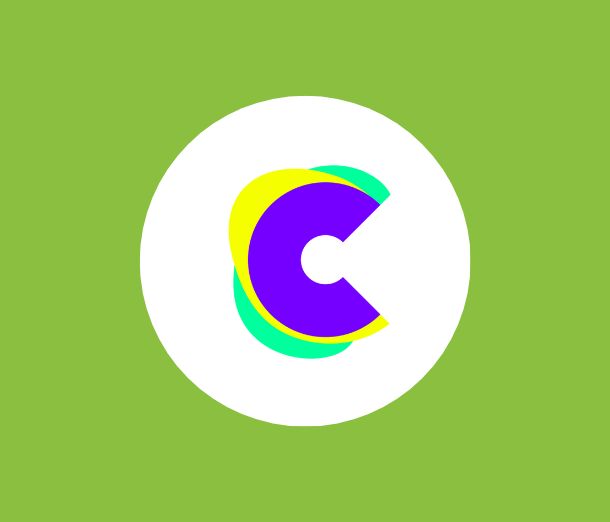Lead Generation Services in the UK
Your business needs leads; we know how to get them. Brafton’s lead generation services support the lead nurturing process from beginning to end. Whether you need target audience analysis, persona development, targeted advertising, email marketing strategy, lead magnet creation or something else, we’re here to help. We’re backed by decades of powerhouse strategies proven successful for clients all over the world.
Acquire, nurture and engage qualified leads with a custom lead generation campaign.
Speak With a Brafton Expert:
By entering your email address, you agree to receive emails from Brafton in accordance with our Privacy Policy.
You may unsubscribe from these communications at any time.

Why Brafton for Lead Generation in the UK?
Brafton is a world-leading, full-service content marketing agency that has worked with clients across such diverse industries as:
- Finance.
- Software.
- Insurance.
- E-commerce.
- Health care.
- And more.
We’re able to produce effective lead generation content and strategy for our clients because we immerse ourselves in their brand, business and goals. For each client relationship, we learn about their unique positioning, value proposition, competitors and target audience so every strategy we recommend and each content project we carry out is perfectly aligned with your needs.
Brafton’s internal structure is a strength in itself: We have fully staffed departments for SEO, PPC, social media, editorial, graphic design, email marketing, video production and sales operations support. These teams work in close collaboration to ensure everything we produce is on-brand and meets your precise needs.
What You’ll Find in This Page:
Summary:
- Lead generation is the process of attracting high-quality prospects, nurturing them through a sales funnel, and converting them into interested contacts ready to make a purchase decision.
- Lead magnets are a core component of many lead generation strategies, and often include creating a high-value asset, requiring contacts to submit contact information in exchange for access to the asset, and following up with them over time with helpful content and sales messaging.
- Brafton takes a custom approach to lead generation strategy and execution for each client.
- Outsourcing lead generation can be worthwhile, but it’s imperative that companies partner with lead generation agencies that put their clients’ needs at the centre of the relationship and are transparent with their strategies and pricing structures.
Proven Results from Lead Generation Efforts
How We Automated Sales Ops Processes for Quicker Speed-To-Lead
Creating Content That Converts for Transparity
How We Improved EOS GmbH’s PPC Performance
How We Improved EOS´s PPC Performance
87K+ Clicks (& Rising) for the City of Pompano Beach
Helping Crews Control Think Global With Local SEO
How Brafton Generates Leads for Our Clients
Effective lead generation depends on a brand’s ability to attract potential customers, demonstrate their value and convince them to convert. Each stage of the journey — from who is a “potential customer” to what it means to “convert” — depends on your business model and goals.
Our lead generation strategy process typically follows these steps:
Step 1: Brand & Goal Discovery
We’ll start by diving into your brand and analysing your target audience to make sure we’re reaching the right people. This includes collaborating directly with your internal stakeholders and even conducting buyer persona interviews with your existing customers.
Step 2: Lead Qualification Standardisation
Then we’ll distinguish between leads who are marketing qualified versus sales qualified. Grouping leads in this way ensures your outreach is appropriately calibrated to each lead’s level of interest and intent.
Step 3: Lead Generation Strategy Development
After discovering what motivates your inbound leads, we develop a lead generation strategy designed to increase awareness and interest for your company. Each lead gen strategy is custom-created for each client. Common elements of a lead generation strategy include:
Content creation
- White papers.
- Original research reports.
- Webinar events.
- Blog series.
- Email newsletters.
- LinkedIn outreach messaging.
Content distribution
- Search engine optimisation.
- PPC advertising.
- Paid social.
- Organic social media.
- Email marketing.
- Digital PR.
Step 4: Ongoing Campaign Refinement
Once we have their attention, your prospects will be on the path to making a purchase and the conversions will start rolling in.
Lead generation companies that promise overnight success are overselling you. Lead qualification and lead nurturing programmes take several months to fully launch. Ultimately, a quality lead will purchase on their own terms, not yours. That’s why we focus our marketing campaign efforts on delivering quick wins by converting high-quality sales leads while also methodically nurturing colder leads through helpful content.
To that end, we’ll schedule regular check-ins where we can review campaign performance analysis and discuss optimisation recommendations.
Step 5: Iterate for Success
A strong lead generation programme can’t stay stagnant because your industry and target audience won’t stagnate. Your campaign needs to keep up with the needs of your prospects, which means continuing to optimise, update, experiment and iterate is essential for future success.
Brafton’s Best Lead Generation Strategies
No matter the size and scope of your goals, Brafton is the lead generation agency with the full suite of services you need to achieve them. Every lead generation service listed below is fully customised to your brand’s unique needs, timelines, resources and goals. Each can be purchased à la carte or combined into a comprehensive package.
1) Lead Magnet Creation
Incentivise leads, impress prospects and boost your lead generation efforts with a lead magnet. A high-converting lead magnet includes: 1) a valuable, engaging asset; 2) a conversion landing page; 3) a compelling call-to-action; 4) a gated content form to capture contact information; and 5) an autoresponder email to establish an email marketing relationship.
Some popular forms of lead magnet assets include:
- White papers and eBooks.
- Original research reports.
- Online courses.
- Interactive quizzes.
- Instructive workbooks.
- Webinar presentations.
2) Lead Magnet Distribution
Creating a lead magnet is only the first step. A strong distribution strategy is what enables your lead magnet to begin attracting high-quality contacts to nurture. We take a multi-channel approach to lead magnet distribution.
Common lead magnet distribution tactics include:
- SEO distribution via supporting blog content.
- PPC distribution via paid ads within the Google Ads network, LinkedIn ads and more.
- Social media distribution via eye-catching organic posts as well as sponsored posts.
- Email marketing, including follow-up messaging to those who submitted their email address in exchange for your magnet.
3) SEO & GEO
If you want leads to find your company organically, your website should come up in their search engine results, whether they’re using a traditional search engine like Google or a generative answer engine like ChatGPT or Google’s AI Mode.
Search engine optimisation is the process of creating or updating content for the best probability of being ranked highly in search engines such as Google, Bing, Yahoo, DuckDuckGo! and others. This is done through intentional content creation, keyword research, technical SEO and other tactics.
Generative engine optimisation is the process of creating or updating content for the best likelihood of being referenced in generative search engines such as Gemini, ChatGPT, Perplexity and others. This is done through technical structural elements and Schema markup, content structure, prompt research and other tactics.
4) PPC
You can do a lot with organic marketing tactics, but sometimes pay-per-click ads are exactly what your company needs to get in front of the right audience. Our PPC strategists can help you build an ad campaign that supports your lead generation goals. Our team is especially well-versed in inbound lead generation, which utilises digital marketing techniques like blogs, emails, social media, campaigns and content optimisation to attract visitors to your website.
The process can look something like this: Someone sees your brand online and clicks on an image, button or other call-to-action that takes them to your website. Once they’re on your site, they fill out a form with their information, and just like that, your sales team has a new qualified lead.

5) Social Media
There are millions of eyes on social media every day, making these platforms valuable inbound lead generation channels. By sharing landing page links, incentives, upcoming events or other offers, you can give social media users a reason to share their information with your company.
Social media is an effective lead generation tactic for both B2C and B2B companies, though the most successful platform will vary based on each brand’s target audiences. Brafton’s results-driven social media marketing services include organic posts and social ads on the channels of your choice, such as Facebook, X (formerly Twitter), LinkedIn, Instagram, YouTube and Pinterest.
Brafton social media strategists can help you with everything from custom content creation and targeted campaigns to social listening and reporting, allowing you to achieve your lead generation goals and more.
6) Email Marketing
For many prospects, signing up for an email newsletter is one of the first steps they take when engaging with a new brand. This triggers the lead generation process, and the emails you send them after they opt in to receive your messages is the nurturing that could eventually lead to a conversion.
Our email marketing experts can do everything from drip campaigns to newsletters, and they’re just as eager as you are to turn prospects into conversions.
7) Sales Operations Support
Generating leads is only the first step toward earning a new customer. Once someone gives you their contact information, it’s up to you to determine what the next step is. Often, that includes a lead qualification review, routing them into the appropriate sequences within your customer relationship management (CRM) system, assigning them to a sales representative to follow up or a combination of these steps.
Our Sales Operations team can support in these activities by creating processes and workflows within your CRM that support the efficient processing of leads as they enter your system.
8) Web Design & Development
Your prospects’ first impression of your brand will most likely be your website. To ensure it’s a positive first impression, your site must be designed to reflect your brand’s identity, immediately and clearly highlight your mission and values, and support visitors along their journey. A few non-negotiable characteristics of a good website include:
- Intuitive navigation.
- Clear CTAs and messaging.
- Helpful resources.
- Recognisable branding.
Brafton’s multidisciplinary approach to website design and development ensures you’ll meet your target audience’s expectations and needs, while supporting your business goals.
What is the Lead Generation Funnel?
The lead generation funnel is a framework that describes the journey buyers follow from the first time they interact with your brand to the point when they become a customer. This buyer journey looks different for each brand, and depends upon your industry, target audience, unique value proposition and more.
Funnels are wide on top and narrow at the bottom. That’s because not everyone who enters at the top of your funnel will make it to the end — and that’s OK. Not everyone is the right customer for your brand. One benefit of understanding your brand’s unique lead generation funnel is knowing how people enter the funnel, what motivates them to move to the middle of the funnel, and what prompts them to convert at the end of the funnel.
While each brand’s buyer journey is unique, most companies find their lead generation funnel fits the following model:

Top of Funnel
Step 1: Identify & Attract
At the top of the funnel, your aim is to spread awareness. You’re identifying your target audience — your ideal customers — and attracting them to engage with your brand via your website, social media and other channels. At this stage, you’ll focus on highlighting the pain points that your company can alleviate, maintaining a helpful tone rather than a commercial one.
Step 2: Capture
As people learn about your company, your mission and values, and the problems that you help solve, your goal is to identify ways to keep them engaged. Often, that includes creating consistent channels you can use to share new content and information with them, such as email newsletter lists and social media notifications.
Middle of Funnel
Step 3: Nurture
Once you’ve captured their attention and interest, it’s time to begin nurturing your contacts: providing them with information that encourages them to explore your company further. At this stage, you’ll continue appealing to the pain points that captured their attention at the top of the funnel, but layer in messaging about your solutions as well. Brand goals at this stage are to strengthen brand recognition, build trust and authority, and to communicate your unique value proposition.
Bottom of Funnel
Step 4: Qualify & Convert
Leads who progress to the bottom of the funnel are those most likely to convert — those that have a need for your solutions, and see the benefits of working with your company. This is the stage where you’ll use your most salesy messaging to encourage them to convert: Schedule a demo, book a trial, make a purchase or another action that’s valuable to your organisation.
Not all leads who convert will be a good fit for your company. That’s where lead qualification comes in. This is the process of reviewing inbound leads and determining whether they’re a high-quality lead (one who matches your ideal buyer persona) or a low-quality lead (often someone who wouldn’t benefit from your products or services, or who doesn’t have the budget for them).
A sound lead scoring and qualification process enables your sales team to focus on the highest quality leads for maximum impact.
Step 5: Loyalty & Recommendation
A new customer purchase is the beginning of a relationship. Once you’ve enticed someone to convert, your focus shifts to customer satisfaction, retention, loyalty and customer referrals. The customer experience will be a major factor at this stage, but strategic marketing has a place here as well. Common tactics include loyalty programmes; customer satisfaction surveys; review or testimonial requests; and refer-a-friend bonuses or discounts.
Meet the Team: Brafton Experts Leading the Way
Our multidisciplinary approach means our lead generation services are supported by expertise across important fields such as SEO, PPC, editorial, graphic design, social media and more.
Learn more about our expert leaders working to elevate our clients’ brands:



Eric Bush is Brafton’s global Director of Paid Search. He is the go-to person for PPC questions and strategy across the business. When he’s not creating his next great proposal for one of our clients, he’s dedicating his time to his wife and four children (two adopted from South Korea). He can also be found hiking, playing video games and following both international soccer and American football.




Philip Weafer is Brafton’s global Director of SEO based in Boston. He has a full decade (and counting) of digital marketing experience to his name. He’s a big sports fan with a keen interest in teams across multiple countries and competitions. During his free time, he (attempts) to play golf and other sports socially to an impressively average standard.

Industries We’ve Worked With
What works for lead generation in one industry can’t always be applied to another industry. We know what it takes to develop strategies based on your brand, market space, target audience, products and solutions, value proposition and more. We’ve successfully worked with clients across a range of industries, including:
What’s the Difference Between B2B and B2C Lead Generation Strategies?
Though all brands’ lead generation processes follow the basic framework of attract-nurture-convert, as described in the lead generation funnel above, the nuanced details of what that includes varies greatly from one organisation to another. One of the biggest determinants of what your lead generation strategy should look like is whether you’re a B2B or B2C brand.
A B2B company is one whose products or services are meant to be consumed by other companies. For example, a process equipment manufacturer creates their machines for other businesses to use.
A B2C company is one whose products or services are meant to be consumed by individuals. For example, a food and beverage company produces snacks for shoppers to buy from the supermarket.
B2B lead generation needs to account for the many people and considerations involved in a purchase. Taking the example of the process equipment manufacturer, a typical sales cycle might involve someone from a food and beverage company researching various manufacturers, determining their specific needs, reviewing equipment options with their engineering and operations teams, discussing the budget with their company’s leadership and board, meeting with multiple suppliers and then finally making a decision.
When planning your lead generation funnel, each of these buyer personas and steps of the journey must be accounted for. We can create content that supports each of these phases.
B2C lead generation needs to take similar considerations into account as well, but they’ll look vastly different within this context. Taking the example of a food brand whose products are available in a supermarket, they’ll need to ensure that the typical shopper will recognise their logo while strolling through the aisles, understand the unique qualities of their particular product, and enjoy it enough to buy it again the next time.
Planning for this type of lead journey often involves understanding not only the buyer’s needs — such as a high-protein snack — but also where they’ll be most likely to learn about the brand. This requires understanding your target audience’s relationships with social media, email and more.
Lead Generation FAQs
Learn more about lead generation here:
Lead generation is the process of attracting potential customers to your brand with the intention to nurture them along the buyer journey and encourage them to buy from your brand.
A lead generation agency is a strategic partner that can assist with lead generation activities such as:
- Lead reporting.
- Buyer persona creation.
- Lead generation strategy.
- Lead magnet creation.
- Content distribution.
- Lead scoring and qualification.
- Sales operations support.
Lead generation is important because all brands need customers in order to thrive. Lead generation is the process of drawing new customers to your brand to ensure continuous growth. Companies that leave lead generation out of their strategic marketing planning often find it difficult to attract new leads or convert existing contacts.
B2B lead generation is the process of attracting business customers to a brand with the intention of nurturing them and their colleagues along a buyer journey. This type of lead generation differs from B2C lead generation in several ways, including:
- B2B purchases are often much more expensive than B2C purchases.
- B2B sales cycles are often longer and more complex than B2C cycles.
- B2B brand recognition often occurs in professional networks and services directories, whereas B2C brand recognition often occurs in more casual social networks and physical locations.
- B2B buyers often involve multi-person teams and rounds of approval, while B2C buyers are often individuals who are making personal purchases.
Outsourcing lead generation activities is often a smart move for companies because it removes two of the most common obstacles to efficient lead generation: Lack of time and resources. By working with a lead generation agency, businesses can offload some of the most time-consuming aspects of lead generation, like strategy planning, content creation, content distribution and lead qualification, so that they can focus on more impactful activities like lead nurturing and new campaign ideation.
In addition to helping teams reclaim time in their workdays, another benefit of outsourcing lead generation is bringing in a new set of expertise to review your brand’s unique selling points, lead generation processes and marketing assets. Having this external perspective can help push your strategy forward and identify opportunities for improvement that may be difficult to recognise internally.
The benefits of lead generation include:
- Increased trust and authority signals.
- Additional sales activity.
- Strengthened brand awareness.
- Improved digital presence.
The lead generation tactics that work best for a particular brand depends on the brand personality, target audience’s needs and wants, modes of communication and more. That said, a general framework for lead magnets that work includes:
- High-value asset: Something that users would be willing to share their contact information in exchange for access to, such as a high-value research report or an instructive webinar.
- Conversion landing page: A page with just enough compelling copy to encourage the user to fill in the form in order to access the high-value asset.
- Conversion form: A means to collect contact information so you can follow up with the prospect after they’ve accessed your asset.
- Autoresponder email: A thank-you email that’s sent as soon as the form is submitted, which includes a link to the high-value asset. This will establish a communication channel between your brand and your prospects, and give you the ability to send follow-up messaging to them.
Data privacy is increasingly important to understand in modern digital marketing strategies, and it takes even more importance in lead generation strategies when people are actively giving you their contact information.
At Brafton, we take data privacy seriously, and we ensure the lead generation efforts we assist with are done in compliance with GDPR and/or any other applicable regulations.
All industries need lead generation, as all companies require an influx of new customers in order to stay healthy. However, lead generation is often most pertinent in B2B industries as sales cycles are often lengthy and sales contracts typically involve large budgets and multiple stakeholders’ approval.
The most common challenges that companies face pertaining to lead generation are:
- Understanding their buyer journeys.
- Understanding their target audience’s paint points and preferred modes of communication.
- Identifying the most impactful types of lead magnets to create.
- Effectively distributing their lead magnets to attract qualified leads to their sites.
- Qualifying incoming leads and appropriately nurturing them through the sales funnel.
- Accurately attributing lead sources.
Brafton has the expertise and staff to alleviate all of these challenges.
Demand generation is the process of creating demand for a particular product or service area. This is important when consumers may not realise that they’re facing a problem for which there is a solution, or when they aren’t aware that there are solutions available that would benefit them. Demand generation is focused on the top of funnel when building awareness is a primary goal, but is less concerned with the middle and bottom of funnel stages.
Lead generation, on the other hand, often relies on demand already being present. In this case, your target audience may already be aware of a problem they’re facing, and may even know about potential solutions to that problem. The marketer’s task at this point is to increase brand awareness and recognition, as well as nurture prospects down the sales funnel.
Yes, hiring a lead generation agency is often worth the upfront effort and investment of finding, vetting and contracting with them. That’s because lead generation agencies help increase leads, which financially benefits your company. When working with a full-service agency like Brafton, you get more benefits for the initial cost because of our wide-ranging capabilities, giving you access to not only lead generation-specific services, but overarching marketing support as well.
How Much Do Lead Generation Services Cost?
Lead generation agencies broadly use a variety of pricing structures, such as cost-per-lead, cost-per-meeting, monthly retainers, revenue sharing and more. Each has their own pros and cons, but we take a unique approach.
At Brafton, we value flexibility in our partnerships, allowing us to respond to client needs with agility.
Brafton is a full-service content marketing agency, which makes us well positioned to develop, implement and grow effective lead generation strategies. Our in-house staff is our strength: We have expertise that spans multiple departments, including editorial services, graphic design, video production and animation, social media, PPC, SEO and more. As such, we’ve developed a pricing structure that provides flexible access to our full suite of services as needed.
Brafton’s Pricing Structure: Built-in Flexibility
Our pricing model is based on units, with 1 unit equivalent to £75 of marketing spend.
When you begin working with Brafton, you’ll allocate your units to particular projects, but if your needs shift, your units can shift, too. If you sign on for a full suite of blog content, but then realise a month later that what your brand really needs is an introductory video, we’ll work with you to re-align your strategy. No change fees, no questions asked — just full support when you need it.
We believe in the value of true partnership. With that in mind, we don’t charge extra for basics that should be included. All our client relationships come standard with regular benchmark and ongoing reporting, marketing strategy tips and guidance, and a dedicated content marketing strategist (CMS) and project manager (PM) who will ensure all projects are completed on-brief and on time.
What to Look for in a Lead Generation Agency
Different lead generation companies may provide similar services and strategies, but none of them have the data, creative, vision and end-to-end project management to bring multiple lead generation campaigns to life simultaneously.
We built our own best-in-class content marketing software specifically to address business needs like yours: visibility into your agency partner, awareness of your Brafton team, real-time insight into performance and total transparency with the status of all of your deliverables.
We don’t obscure our tactics or over-promise. We’re one-to-one partners with your marketing and sales team.
When searching a B2B lead generation service, consider:
- Do they have existing clients who are willing to speak to you directly as a referral?
- Do they have expertise in your niche?
- Can they speak the language of your target audience?
- Do they have the full scope of services required to fuel a lead gen engine?
- Do they regularly report performance metrics?
- Are their services configurable to businesses of different sizes and industries?
- Are they available when you need them?
- Are you locked into a contract you don’t use or that isn’t successful?
As a lead generation expert that’s been in content marketing since its inception, we know what it takes to drive inbound leads and win deals.
Read More About Lead Generation on The Brafton Blog

How To Fix Google Ads Spam Leads Problems

The Outbound Marketing Playbook: Tactics To Drive Leads and Visibility

15 Organic Lead Generation Tactics (+ Lead Nurture Tips)

What Are Lead Magnets? 3 Ideas To Bring Your People In

Tips for Lead Generation: Finding Your Brand’s Main Characters

The Lead Generation Process: Turning Strangers Into Supporters
Not in the UK?
Check out our international Lead Generation Agency services:



